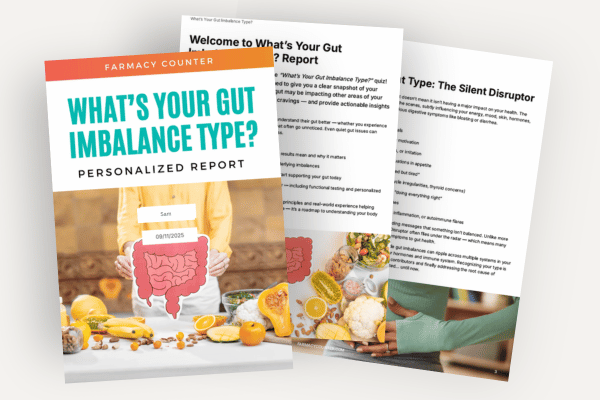
You can be eating all the right foods — the colorful veggies, the clean proteins, the perfectly balanced plate — and still feel bloated, heavy, or tense after meals.
Sometimes it’s not the food.
It’s your body’s state when you’re eating it.
If your mind is racing, your shoulders are tight, or you’re scrolling through emails while you eat, your body isn’t in a place to digest — it’s in a place to defend. From a functional medicine perspective, your nervous system plays the lead role in how well your gut performs. When you’re in “fight or flight,” blood flow moves away from the digestive organs, enzymes drop, and motility slows.
That’s why even a nourishing meal can leave you feeling off — because your body wasn’t given the signal that it’s safe to rest, receive, and digest.
Why Your Nervous System Matters for Digestion
Your gut doesn’t operate in isolation — it’s wired directly to your nervous system.
- When you’re anxious, distracted, or rushing, your body stays in sympathetic mode (“fight or flight”). Blood flow gets diverted away from digestion. Stomach acid, bile, and enzymes drop. Food sits heavier. Nutrient absorption suffers.
- When you’re calm, your body shifts into parasympathetic mode (“rest and digest”). The vagus nerve signals your gut to release digestive juices, move food smoothly, and absorb what you need.
👉 Bottom line: Your nervous system sets the stage for every bite you take.
The Breath–Gut Connection
Here’s where your breath comes in.
Slow, intentional breathing isn’t just calming — it’s biochemical. It tells your vagus nerve, “You’re safe.”
That one signal cascades into:
- Increased digestive enzyme + stomach acid production
- Improved gut motility (less bloating, better flow)
- Better nutrient absorption
- Lower inflammation by balancing the HPA axis
- Calmer mind → less stress-driven gut reactivity
Your state while eating can be just as important as what’s on your plate.

A Simple Breathwork Practice Before Meals
Before your next meal, try this 1-minute reset:
- Sit comfortably with your feet grounded.
- Place one hand on your belly.
- Inhale slowly through your nose for a count of 4.
- Hold gently for a moment.
- Exhale even slower through your mouth for a count of 6.
- Repeat 3–5 rounds.
Notice your shoulders drop. Your belly soften. Your jaw unclench.
That’s the shift into rest-and-digest mode.
Functional Medicine Takeaway
Healing the gut isn’t just about food eliminations, supplements, or protocols.
It’s also about how your nervous system experiences safety while eating.
Breathwork is one of the fastest, most accessible ways to flip that switch.
Think of it as giving your gut permission to receive what you’re already giving it.
Ready to Take the Next Step?
If low energy, mood swings, digestive quirks, or stubborn cravings have become your “normal,” your gut might be sending subtle signals for support.
We created a quick, research-backed quiz to help you uncover your unique gut imbalance — and find actionable steps to restore balance and vitality.
👉 Take the 3-minute “What’s Your Gut Imbalance Type?” Quiz here »
You’ll receive a personalized 7-page report with:
✅ Your primary gut type (and what it means)
✅ Targeted food and lifestyle tips
✅ A smarter, functional medicine approach to gut health and resilience

What’s Your Gut Imbalance Type?
Take our 3-minute quiz to discover your unique gut type — and get a personalized 7-page report with insights and actionable steps to support digestion, energy, mood, and overall gut health.






